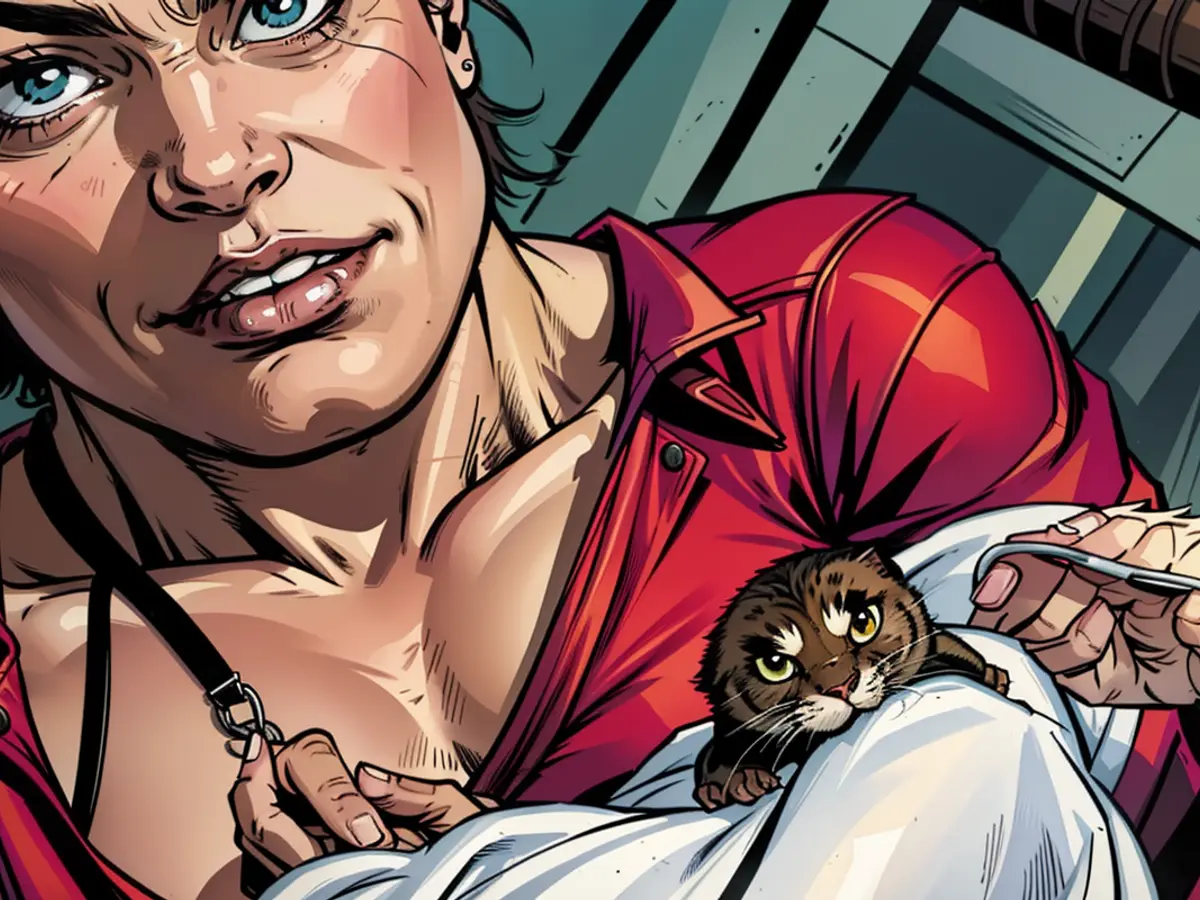- Bat caretaker takes interest in elm horn development - "intriguing creatures"
In a couple of days, Ines Kock, a 51-year-old lady from Pinneberg, will be residing alone with her bearded dragon, Burny, in her loft flat. At the moment, they share the bedroom with three bats. For the past decade, Kock has been assisting both small and large bats in need. In her dimly lit bedroom, she aids in their recovery, feeds them, provides water, and monitors their progress. "Once they've gained their original weight and can fly effectively, we set them free back into the wild," declared the compassionate elderly nurse. She also saved Burny from poor living conditions.
Presently, two pipistrelle bats reside in a man-high, white mosquito net enclosure, while a greater horseshoe bat is housed in a terrarium. These animals came from the nearby wildlife station in Klein Offenseth-Sparrieshoop. Mainly, the bats were handed over by concerned individuals.
Several of these flying creatures are wounded, while others are undernourished or dehydrated. "When it's hot, they merely require a bit of water, and they'll fly off at night," Kock is aware. But how can you tell if a bat requires assistance? "Simple: if you find a bat hanging or resting during the day, it usually requires assistance," Kock explained. Bats can live up to 20 years.
During the spring and autumn seasons, she devotes her time to nurse up to 20 bats in her dwelling. In densely populated months, she spends around 250 to 300 euros a month - most of it on food. The bats consume mealworms, crickets, and if they're extremely weak, a combination of mealworms and cat milk. "It adds up." She hopes for financial support in the form of in-kind and monetary donations. She also shares her experiences on the TikTok social media platform.
For biologist and bat expert Florian Gloza-Rausch, this assistance for the animals is a delicate balance. "Nursing individual bats may not have much scientific significance in terms of population ecology. However, bat conservation also relies on public relations." And for that, this involvement by animal lovers is beneficial. Yet, it's essential that animal affection doesn't go too far. If blood transfusions and lengthy transportation distances become involved, proportionality is lost.
Kock agrees and ensures that the bats discovered in the area are housed with her as naturally as possible. "These are classic wild animals and they should stay that way. I have minimal human interaction with them."
Northern Germany, including the federal states of Mecklenburg-Vorpommern, Brandenburg, Lower Saxony, Bremen, Hamburg, and Schleswig-Holstein, is an essential and valuable bat habitat, said Gloza-Rausch, who is also the board member of the Federal Association of Bat Research and the German Bat Wardens. "Due to the natural landscape features of Northern Germany, such as its extensive lake landscapes, important river systems, heaths, moors, beech and oak forests, and the increasing proportion of ecologically managed agricultural areas, bat species such as the greater horseshoe bat, evening bat, lesser evening bat, pond bat, water bat, serotine bat, ruffled bat, and pipistrelle bat thrive here."
In the Kalkberg Cave in Bad Segeberg, for instance, around 30,000 to 35,000 bats have been wintering there for years, according to Stefan Lüders, the bat specialist of the Nature Conservation Union NABU Schleswig-Holstein. Six to seven earwig-like bat species constitute the majority of the population in this wintering site - one of the largest in Europe. In Schleswig-Holstein, there are 15 of the 23 bat species known in Germany. Across Europe, there are 30 species, according to NABU.
However, excessive light, construction, and wind turbines pose challenges to these small mammals. Regardless, there are positive developments in the population of some bat species, said Gloza-Rausch further. "For example, the populations of pipistrelle and common pipistrelle bats are relatively stable at a high level. Species like the greater horseshoe bat, which in the past suffered severe population declines due to the use of toxic wood preservatives, are recovering well."
The two pipistrelle bats in Kock's mosquito net are now ready to be released back into the wild. The common pipistrelle bat is expected to follow in one to two weeks. "For this, I drive with my daughter near old farms and tall trees. I carefully pick them up with my hands. They sniff briefly and then they're gone."
The European Union provides funding for various wildlife conservation projects, which could potentially support organizations like Ines Kock's in their efforts to care for injured bats. Ines Kock often collaborates with local wildlife stations, including the one in Klein Offenseth-Sparrieshoop, which are part of the European Union's efforts to preserve biodiversity.








